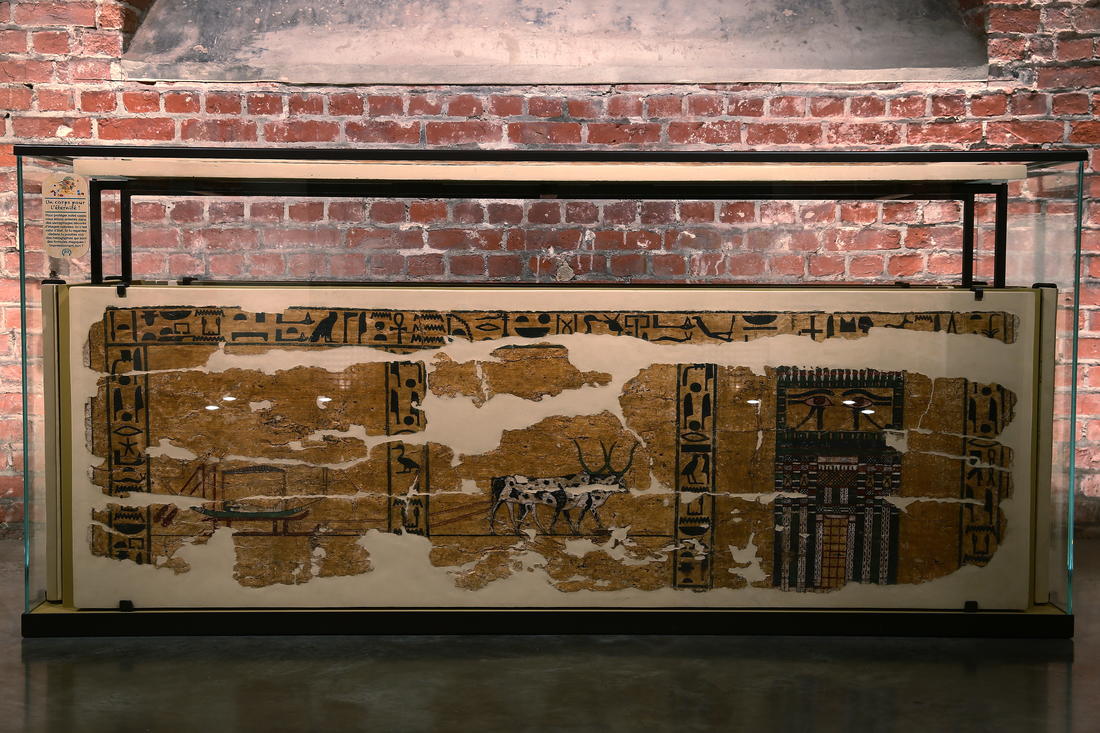The University of Lille 3 is one of the international institutions to have responded to the call launched by UNESCO to save the Nubian monuments in 1960. Professor Jean Vercoutter, then director of the Lille Institute of Papyrology and Egyptology, turned to archaeological sites less well-known to the general public, but very rich resources for the history of Egypt and its former southern province, Nubia. In particular, he searched for the fortress of Mirgissa, a military fortress erected by the Egyptians of the Middle Kingdom (around 2025-1680 BC) to face the rise of the powerful kingdom of Kerma (present-day Sudan).
As a result of the excavations carried out, the university received several hundred artifacts: weapons, ceramics, funerary masks and coffins, necklaces and other jewels now preserved in the collections of the Palais des Beaux-Arts in Lille. One of the most exceptional pieces is a coffin, which arrived in France in five pieces. Made in painted wood for an Egyptian lady named Ibet, it suffered from the humid climate of Nubia and the presence of termites, small wood-loving insects. Among the hundreds of coffins that had been built to protect mummies, only two, in a better condition than the others, could be saved: one is currently in the Khartoum Museum (Sudan), and the other is that of the Lady Ibet, now in Lille.
After being saved from the waters, it underwent an amazing restoration which restored its shape (a four-sided container) and its decoration. It can once again honour the Lady Ibet, and allow her to be led by the oxen towards her last resting place, for all eternity.
Inventory number: L 1651 to 1655

The University of Lille 3 is one of the international institutions to have responded to the call launched by UNESCO to save the Nubian monuments in 1960. Professor Jean Vercoutter, then director of the Lille Institute of Papyrology and Egyptology, turned to archaeological sites less well-known to the general public, but very rich resources for the history of Egypt and its former southern province, Nubia. In particular, he searched for the fortress of Mirgissa, a military fortress erected by the Egyptians of the Middle Kingdom (around 2025-1680 BC) to face the rise of the powerful kingdom of Kerma (present-day Sudan).
As a result of the excavations carried out, the university received several hundred artifacts: weapons, ceramics, funerary masks and coffins, necklaces and other jewels now preserved in the collections of the Palais des Beaux-Arts in Lille. One of the most exceptional pieces is a coffin, which arrived in France in five pieces. Made in painted wood for an Egyptian lady named Ibet, it suffered from the humid climate of Nubia and the presence of termites, small wood-loving insects. Among the hundreds of coffins that had been built to protect mummies, only two, in a better condition than the others, could be saved: one is currently in the Khartoum Museum (Sudan), and the other is that of the Lady Ibet, now in Lille.
After being saved from the waters, it underwent an amazing restoration which restored its shape (a four-sided container) and its decoration. It can once again honour the Lady Ibet, and allow her to be led by the oxen towards her last resting place, for all eternity.
Inventory number: L 1651 to 1655